The clinical manifestation of a penetrated wound is a narrow opening with a deep sinus tract or tunnel into the body. It is difficult to perform sufficient wound debridement by traditional surgery. An encouraging advancement in surgical technology is the effective Versajet™ hydrosurgery system.1 Its small cutting surface and fine control is especially useful for the “difficult to access areas”, such as on hands.2, 3
This innovative hydrosurgery system is a specialized powered surgical tool, which is designed to both debride biofilms and various cavities, whilst preserving adjacent viable tissue. This allows the surgeon using this instrument for soft tissue debridement considerable control and accuracy. Versajet™ utilizes a unique technology, whereby a high-velocity fluid-jet passes across the operating window and into the evacuation collector, creating a localized vacuum to hold and cut targeted tissue while aspirating debris from the site.4 (Figure 1 & 2)
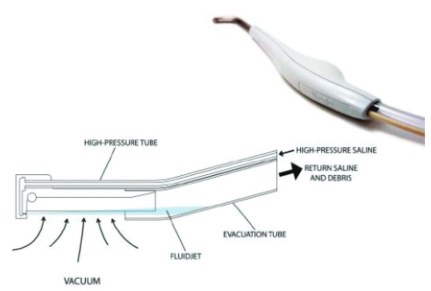
Figure 1: The Hydrosurgery Handpiece
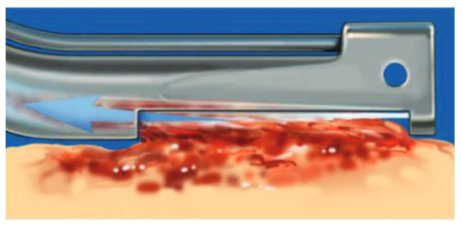
Figure 2: Illustration of the system work
To demonstrate the benefit of hydrosurgery system debridement in penetrated and difficult to debride wounds, the author reported the use of hydrosurgery system in 2 cases. In the 1st case, a male aged 28 was injured by a bomb and had burns, large lacerations and penetrated wounds. In the 2nd case, a non-Thai 73 year old with paraplegia had a pressure sore with a small opening but the wound bed was very deep and wide. The Versajet™ hydrosurgery system was used to debride necrotic tissue in both cases.
A 28-year-old man was injured by a bomb and had burns, large lacerations and penetrated wounds.
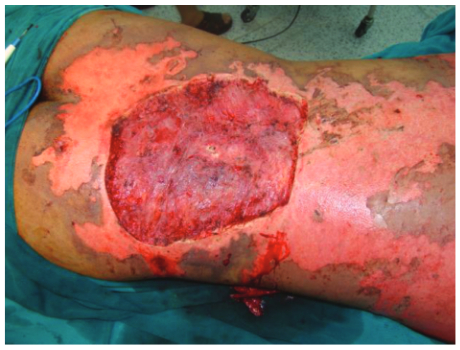
Figure 3: Second degree burns and deep laceration along the whole posterior trunk laceration 20 x 20 cm.
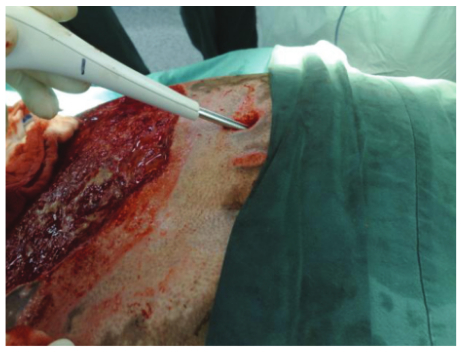
Figure 4: Demonstrates hydrosurgery going deeper in the tunnel wound
A 73-year-old paraplegic had a pressure sore with a small opening but deep and wide wound bed.

Figure 5: Demonstrates hydrosurgery deeper in the tunnel wound
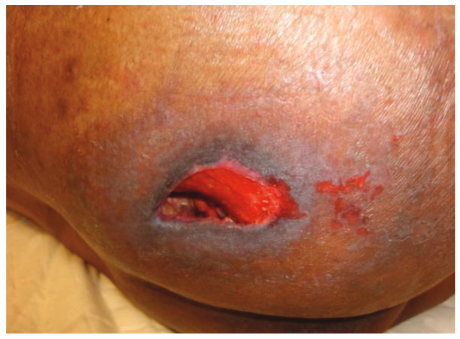
Figure 6: Show Cavity wound
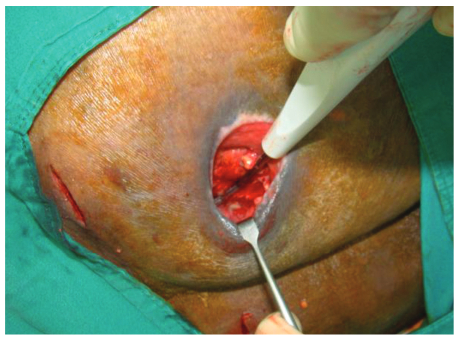
Figure 7: Demonstrates hydrosurgery deeper in the tunnel wound
In the first case the penetrated wound was healed within 1 month. In the second case, the necrotic tissue was almost completely removed with the first application.1 The patient was satisfied and flew back home.
Efficient, safe and fast debridement was achieved in both patients using the hydrosurgery system. Necrotic infected tissue was easily removed. Use of this tool allowed us to target the damaged or necrotic tissue with more exactitude. There are also multiple power settings, which allowed for more restrained excision, thus delicate and viable tissues could be better preserved. We found Versajet™ more effective than traditional techniques for debriding such complex and non-uniform wounds as in our two listed cases.2, 3
Hydrosurgery system has demonstrated (in our experience) superior benefits over traditional surgical debridement to go deeper to the tunnel wounds and achieve sufficient debridement. We think this tool is likely to become a “must” in modern wound care.